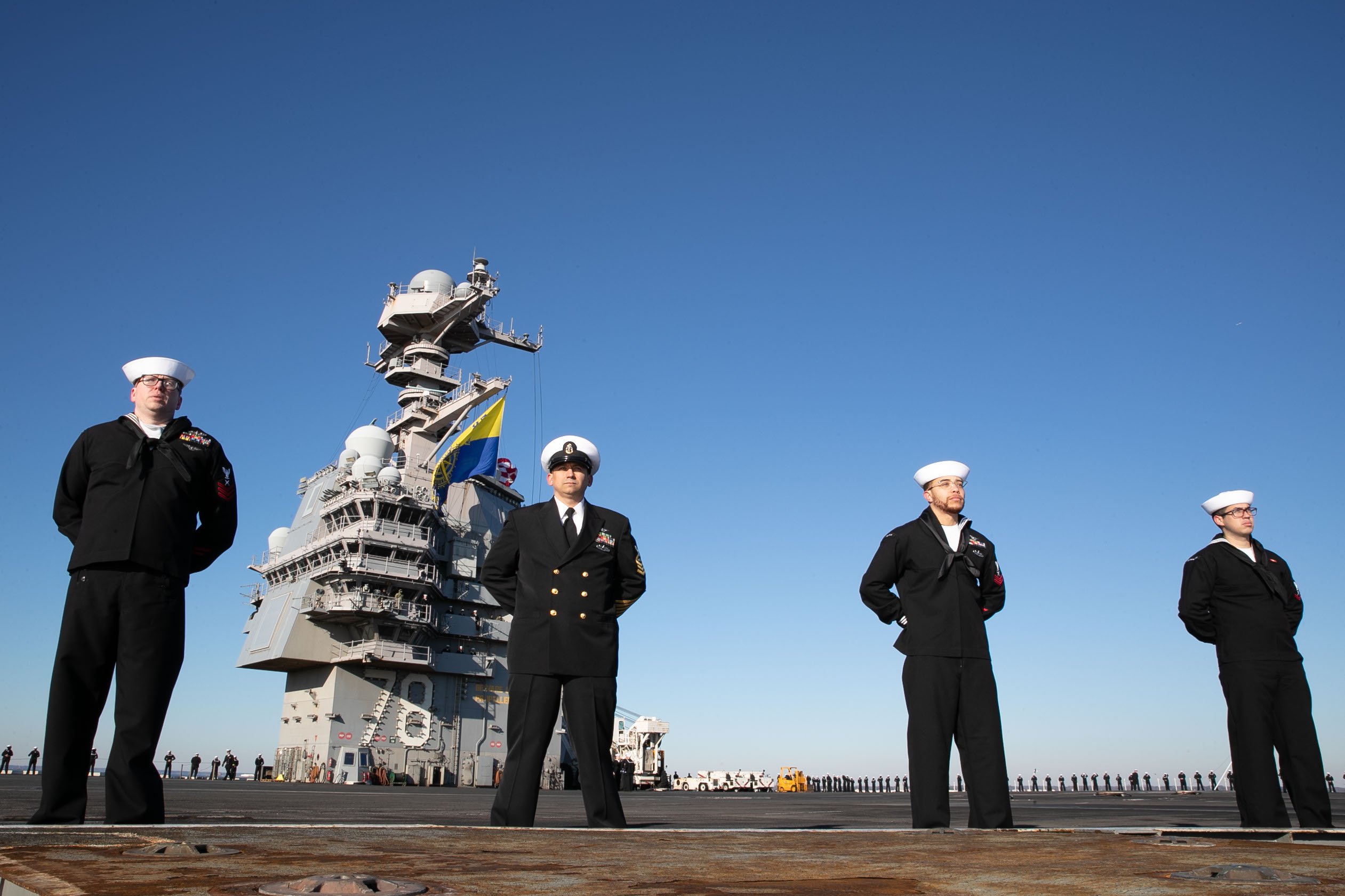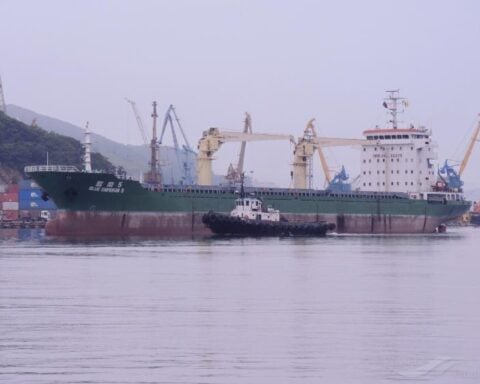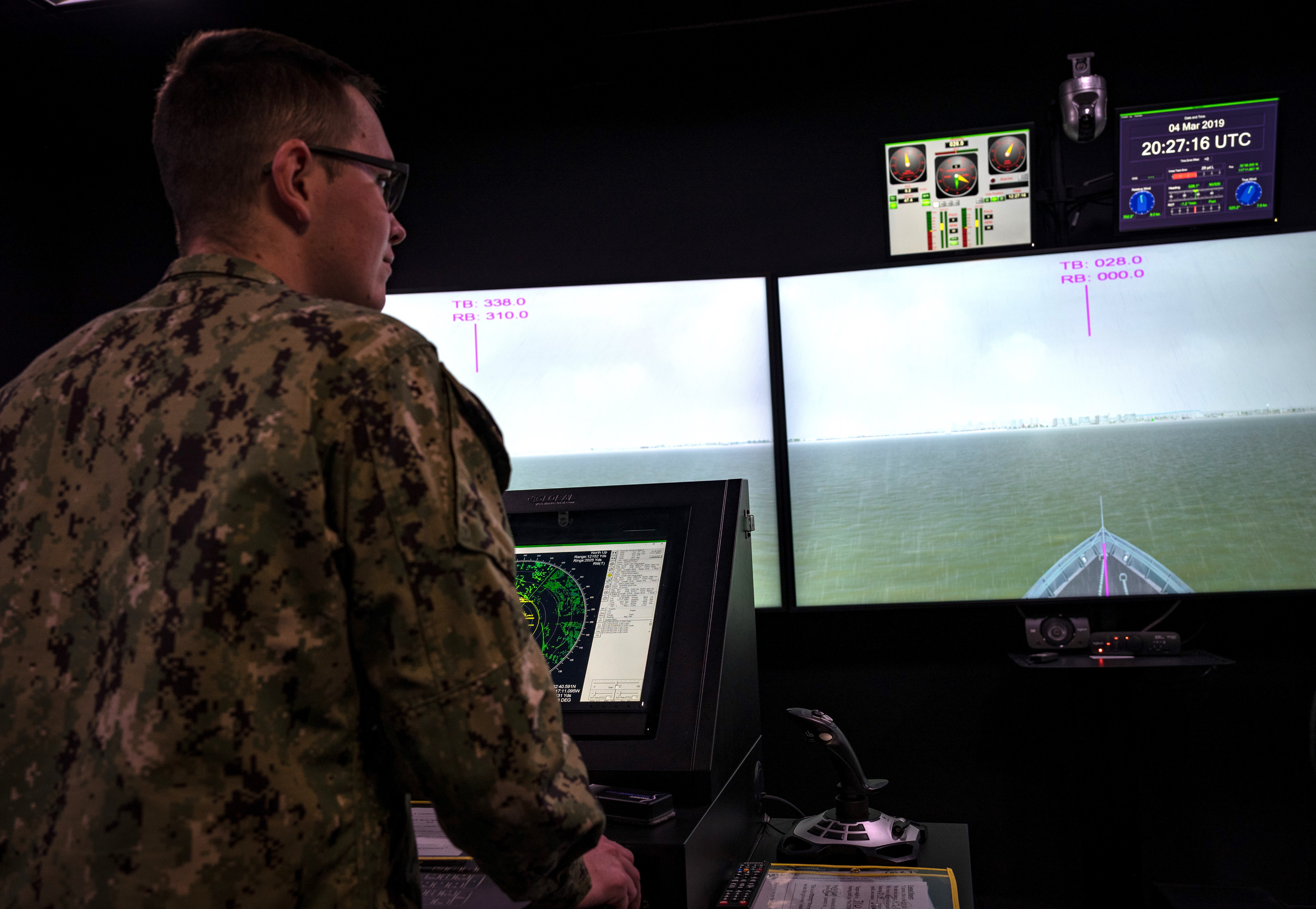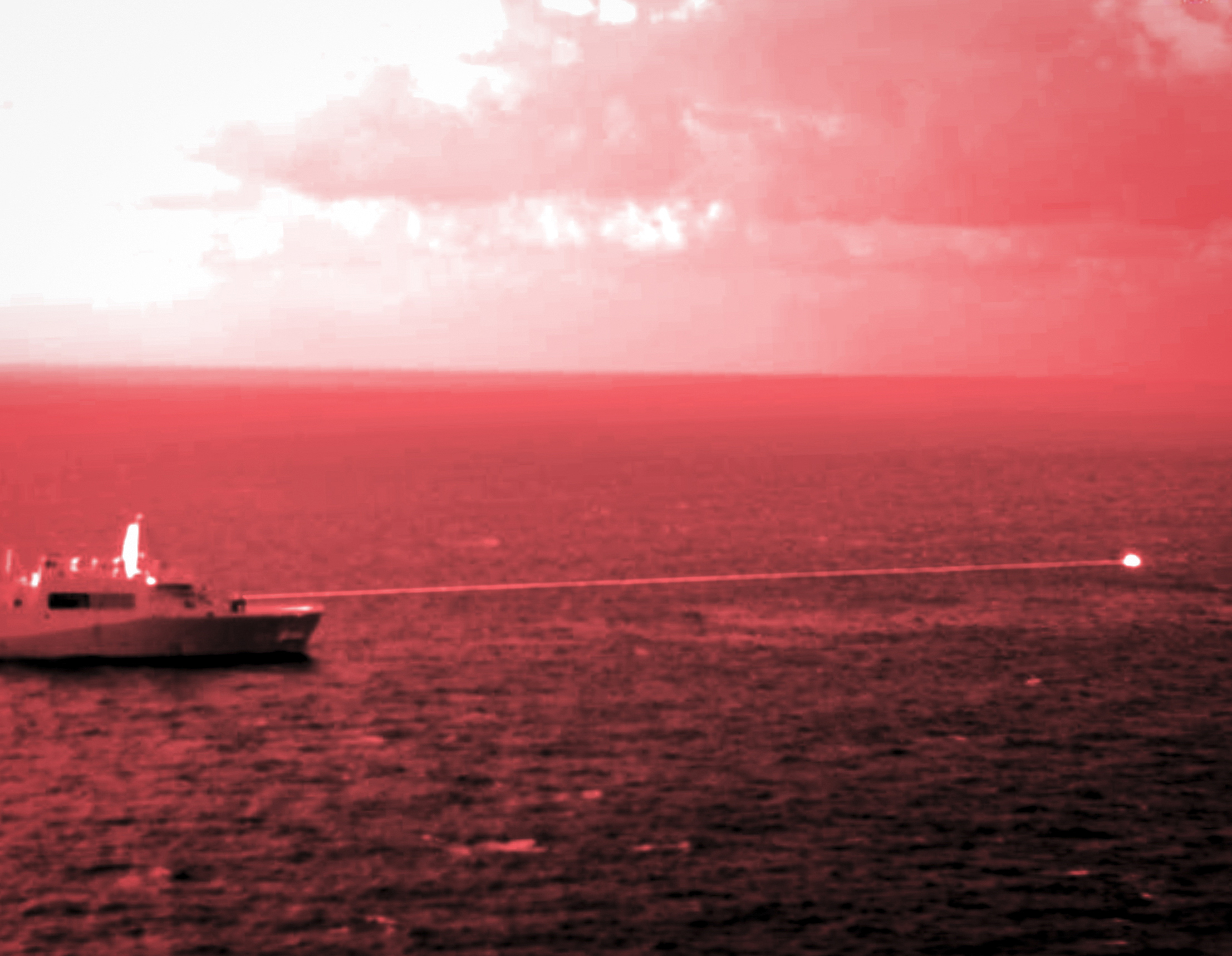
Aircraft carrier USS Gerald R. Ford (CVN-78) pulled into Naval Station Norfolk on Wednesday after a deployment to the Mediterranean that included three extensions.
The Navy’s newest in-service aircraft carrier left in May for a deployment that lasted more than eight months. It was the first worldwide deployment for Ford, the lead ship in the Navy’s new class of carriers.
Ford began its deployment operating in the North Sea, making a port call in Oslo, Norway before heading to the Mediterranean. The carrier had been operating in the Med for several months when it moved closer to Israel, in the Eastern Mediterranean following the October attacks in southern Israel.
“In total, the GRFCSG worked with 17 nations throughout its deployment during exercises Baltic Operations, Air Defender, Bomber Task Force Viking Trident, Neptune Strike, and Sage Wolverine,” the Navy said in a news release. “The strike group operated with Standing NATO Maritime Groups 1 and 2, conducted dual-carrier operations with USS Dwight D. Eisenhower (CVN-69), and exercised with navies from France, Greece, Norway, Türkiye and the United Kingdom.”
The carrier originally deployed with Ticonderoga-class guided-missile cruiser USS Normandy (CG-60) and Arleigh Burke-class guided-missile destroyers USS McFaul (DDG-74), USS Ramage (DDG-61), and USS Thomas Hudner (DDG-116). Hudner and McFaul returned to their respective homeports of Naval Station Mayport in Florida and Norfolk Naval Station in Virginia earlier this month.
The Pentagon first extended Ford‘s deployment in mid-October, shortly after the Hamas attacks in southern Israel that have led to the ongoing conflict in the region. The Defense Department extended Ford two more times, as the U.S. Navy responded to ongoing drone and missile attacks on sea lanes in the Red Sea.
“Though extended, we were the right ship at the right time to answer the call, and our Sailors performed admirably,” Ford commanding officer Capt. Rick Burgess said in a statement. “Ford Sailors honored our namesake’s legacies of hard work, integrity, and courage.”
The third extension in December kept Ford out through the holiday season. The carrier was at sea for 239 days, according to the Navy.
“The Ford crew conducted 33,444 flight deck moves, 3,124 hangar bay aircraft moves, 2,883 aircraft elevator moves, 16,351 aircraft fueling evolutions, and transferred 8,850 pallets of cargo and mail,” the Navy said in the release. “The Gerald R. Ford culinary team prepared and served 3.1 million meals, which included approximately 48,000 dozen eggs, 24,000 gallons of milk, 131,000 hamburgers, 367,000 pounds of chicken, and Gerald R. Ford’s favorite, 79,000 chocolate chip cookies.”
The makeup of the Ford Carrier Strike Group featured the units and staff of Carrier Strike Group 12, Carrier Air Wing 8, and Destroyer Squadron (DESRON) 2.
Ford includes a host of new technologies aboard, including the Electromagnetic Aircraft Launch System (EMALS) and Advanced Arresting Gear (AAG), new systems for launching and recovering aircraft.
Now that the carrier has returned, it will undergo a sortie generation rate test to see if Ford is meeting the promise of increasing the SGR by 30 percent over the Nimitz-class of carriers, USNI News previously reported.





